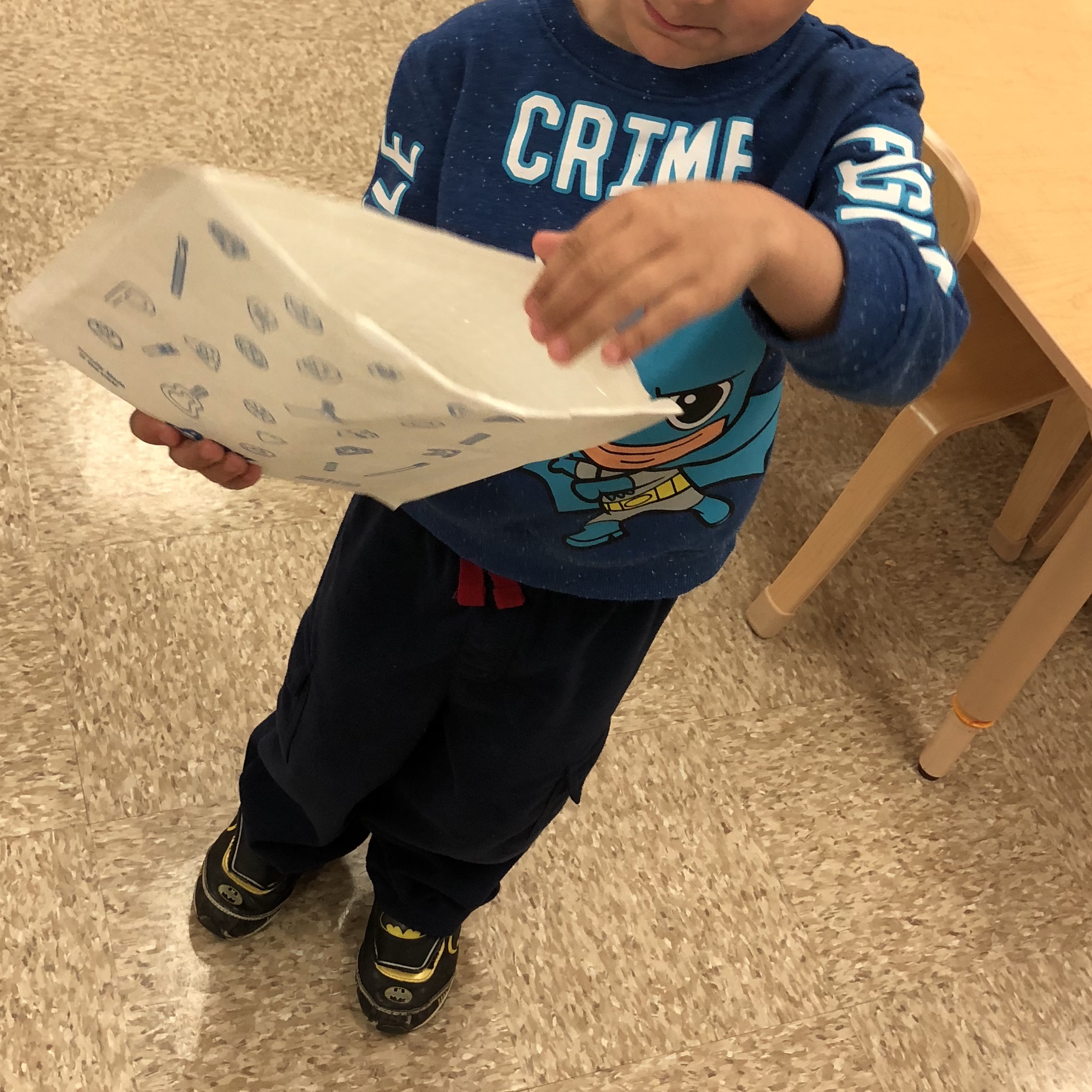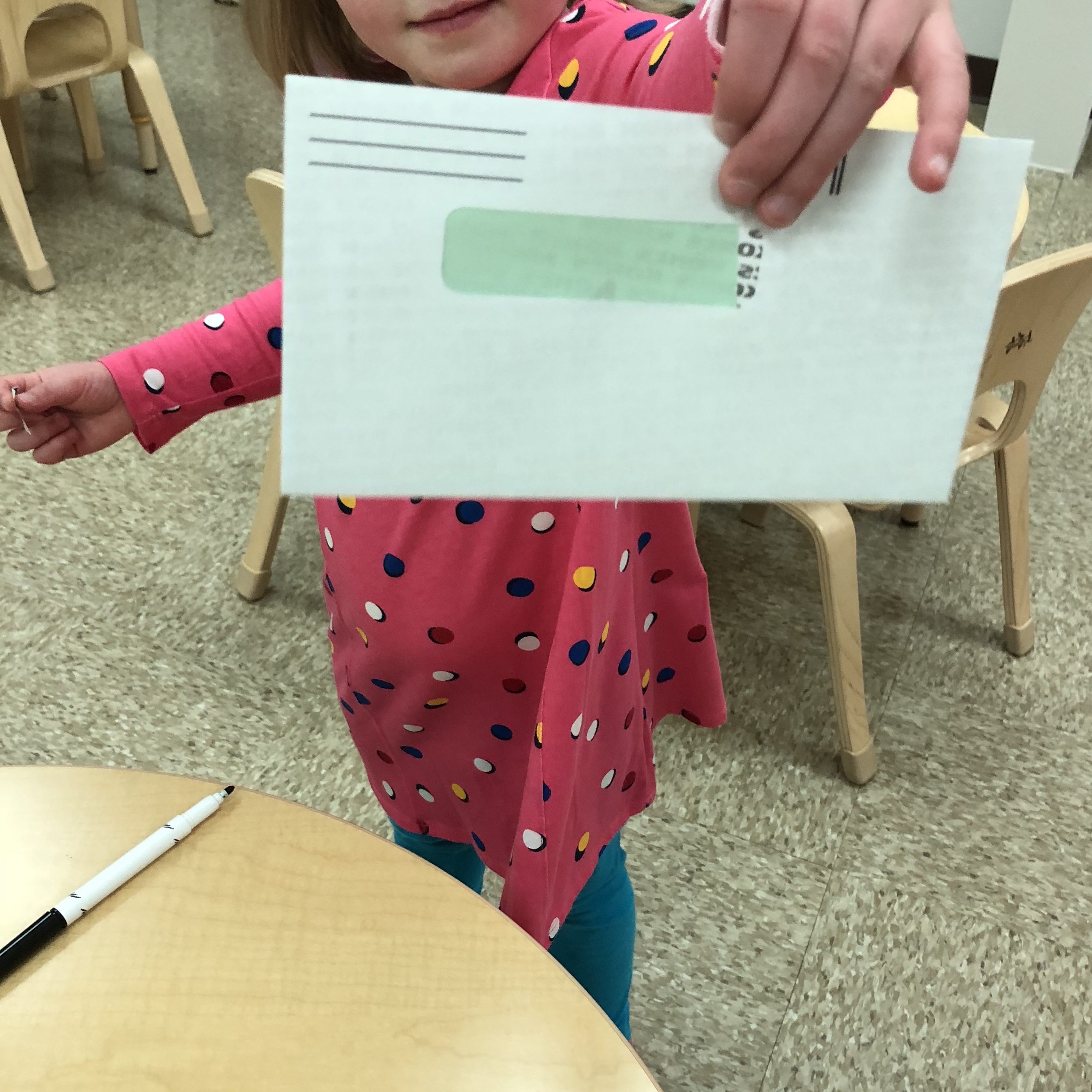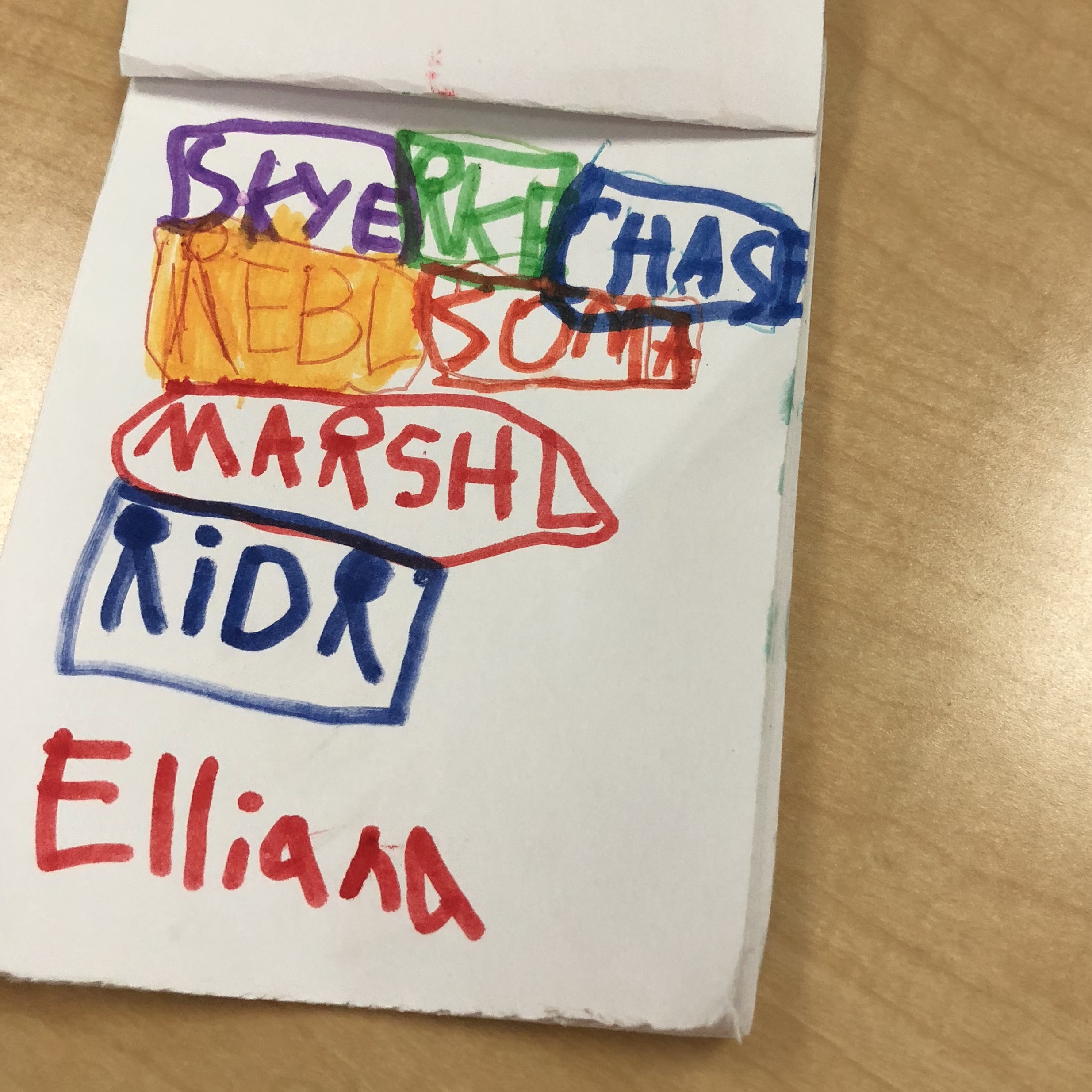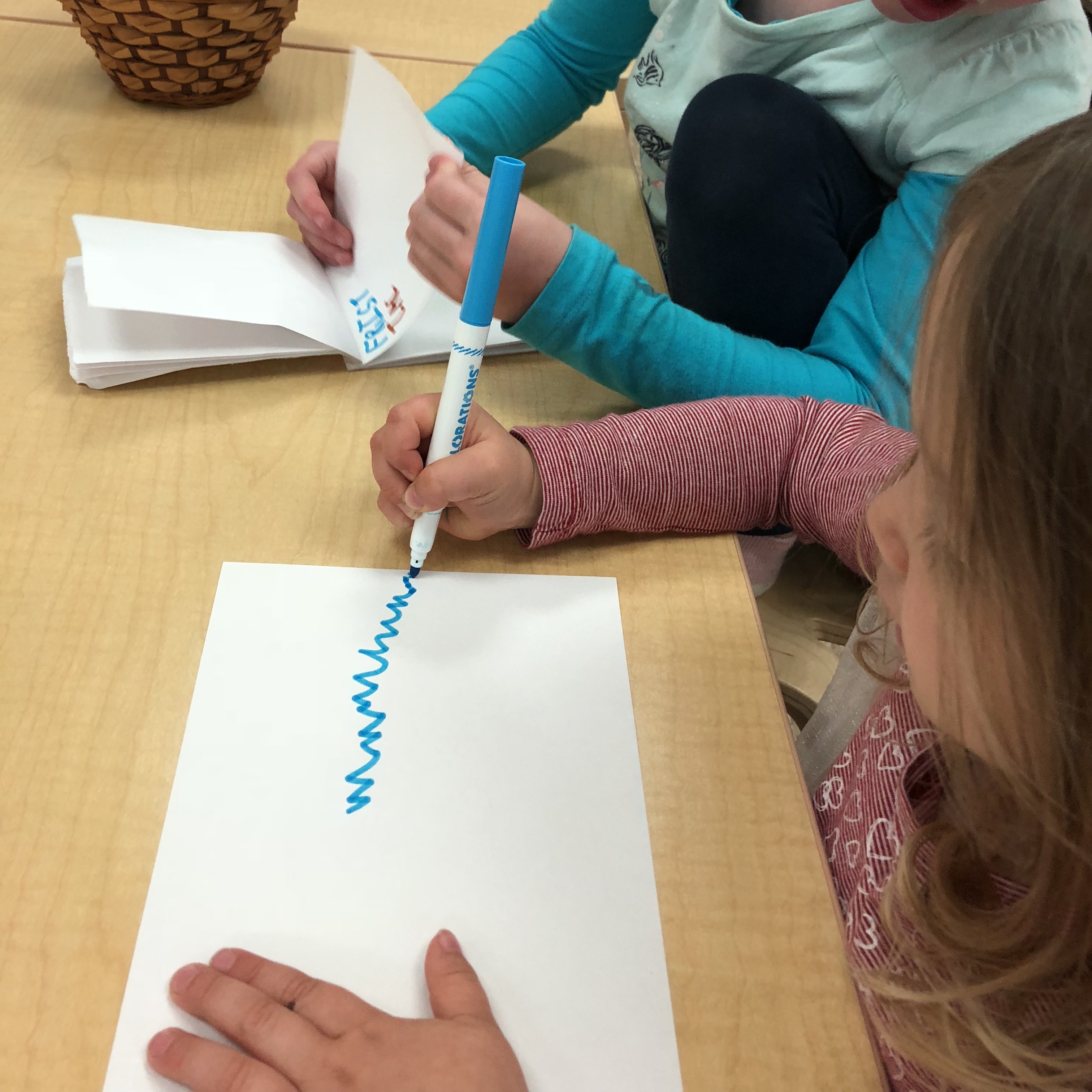Our study on mail continues to evolve based on the interests of the children. Two notable trends have emerged based on their play activities and explorations, specifically related to paper and mark making.
Recently, I have noticed the children show interest in manipulating paper in various ways. Some examples of this include utilizing tools such as scissors and scrapbook punches to transform the paper into new shapes and forms, as well as folding and bending. Besides the obvious benefit of developing fine motor skills, these explorations also offer opportunities for the further development of cognitive processes. Through their exploration and manipulation, they are discovering that paper is not just simply a surface to write on, but rather, something that can be used for many purposes. Some examples of this include snipping paper into small pieces to make “money” and “sprinkles for a birthday cake.” Other uses include folding paper into tubes to make a telescope or microphone. Based on these observations, I plan to offer some activities in the art studio to allow the children to explore this interest in more depth.


I continue to observe new discoveries made by the children in their use of paper and writing to communicate with one another. Today, Elliana, Gwen, and Lane worked together on a project involving the names of Paw Patrol characters. Elliana had made a small book by cutting up and stapling pieces of paper. She was interested in writing the names of the characters into her book. I encouraged her to listen to the names of the characters as I said them aloud and see if she could figure out which letters were in the names based on the sounds. Gwen and Lane observed us doing this and came over to help. Together, the three friends helped each other identify letter sounds in about 10-15 names!

This activity was powerful to watch as a teacher for several reasons. First and foremost, I was proud of the children for using each other as resources, therefore building and strengthening the sense of community in our classroom. Additionally, it was fascinating to see the children make the discovery that letters and sounds have a greater meaning and can be used purposefully. While there is no doubt that letter and sound identification are important skills, it is equally important that children understand the WHY behind it. Why do we need to know our letters and sounds? So that we can use them to build words, which we can then use to communicate through reading and writing. Having that understanding of purpose is critical! One of the most effective ways to teach that is through child-led explorations.

That brings me to my third reason as to why this activity was so powerful. This was something that the children came up on their own. It was completely child-initiated, therefore, it held greater meaning to the children. Because of that, the children were incredibly engaged and motivated in their work. This is a perfect example of why project-based curriculum approaches, such as those inspired by Reggio Emilia, are so effective.
